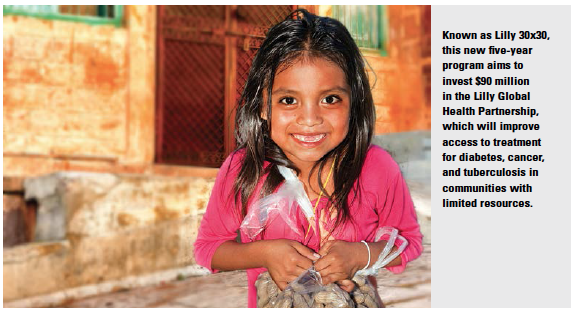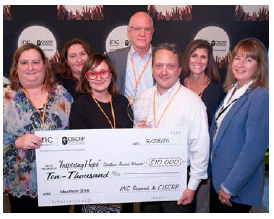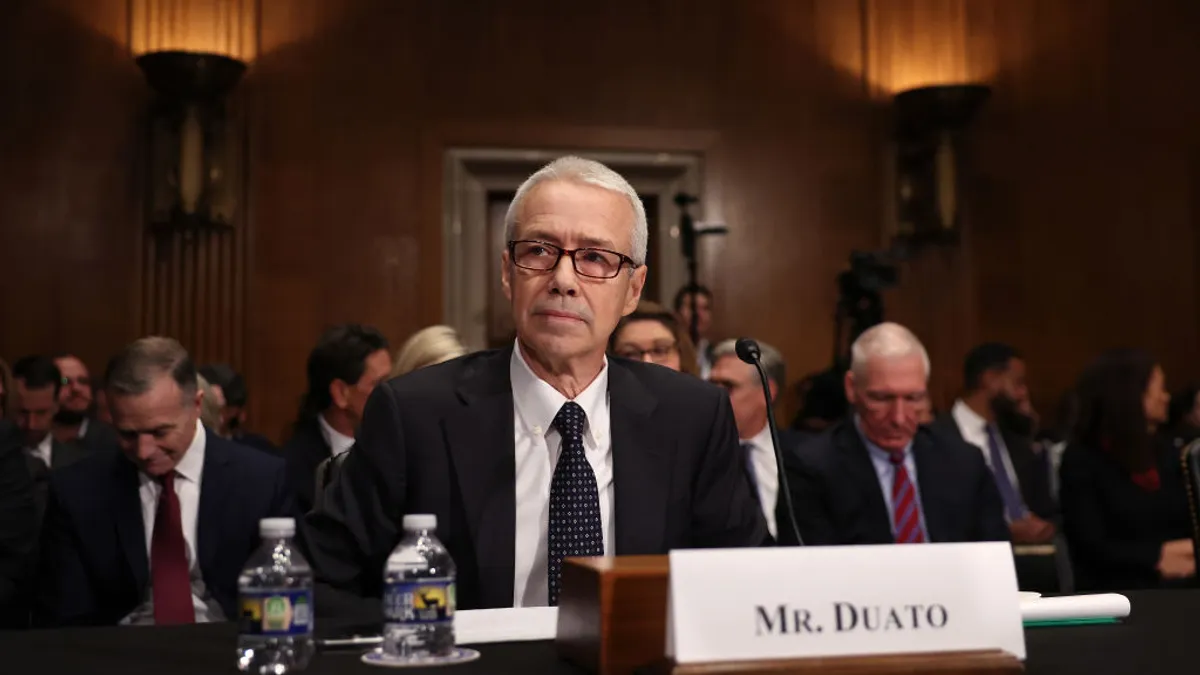Lilly to Expand Global Access to Healthcare
 Eli Lilly and Company has launched an ambitious plan to increase access to healthcare and to improve long-term health for millions of people worldwide. Through investments in people, medicines and health systems, Lilly aims to reach 30 million people in resource-limited settings annually by 2030. Working with expert partners, the Lilly Global Health Partnership will help people living in communities with limited resources in Brazil, China, India, Kenya, Mexico, Russia, South Africa, and the United States.
Eli Lilly and Company has launched an ambitious plan to increase access to healthcare and to improve long-term health for millions of people worldwide. Through investments in people, medicines and health systems, Lilly aims to reach 30 million people in resource-limited settings annually by 2030. Working with expert partners, the Lilly Global Health Partnership will help people living in communities with limited resources in Brazil, China, India, Kenya, Mexico, Russia, South Africa, and the United States.
Pennsylvania Bio Changes Its Name
Pennsylvania Bio has changed its name and brand to Life Sciences Pennsylvania. The association has expanded well beyond its founders’ original focus on biotechnology and today has a membership of more than 700 organizations representing the entire life sciences industry in Pennsylvania — biotechnology, pharmaceutical, medical device, diagnostic and healthcare IT companies; patient advocacy and investment organizations; research institutions; and myriad service providers that support the Pennsylvania life-sciences community.
Astellas Establishes Patient Experience Organization in the Americas
Astellas has created a new department in the Americas that will formally build on efforts to ensure that the voice of the  patient is incorporated across all facets of the company. Effective immediately, Doug Noland has been named executive director of Astellas’ Patient Experience Organization and will report directly to Astellas Americas’ President Jim Robinson.
patient is incorporated across all facets of the company. Effective immediately, Doug Noland has been named executive director of Astellas’ Patient Experience Organization and will report directly to Astellas Americas’ President Jim Robinson.
“Through the establishment of the Patient Experience Organization under Doug’s leadership, Astellas is committed to being a leader in this effort and advancing patient focus in everything we do," says Mr. Robinson, also a PharmaVOICE 100 honoree — 2015, 2016.
INC Research and CISCRP Announce Winner of Inspiring Hope Ideathon
INC Research, together with the Center for Information and Study on Clinical Research Participation (CISCRP), announced Team C2: The Clinical Study Change Agent Collective was chosen as the winner of the 2016 “Inspiring Hope" Ideathon. The team’s idea to create a corporate social responsibility program had longevity and momentum, and begins at the start of the patient journey.
 Team C2, led by Angela Radcliffe, executive VP, FCBVIO and Patrick Tobin, executive VP FCB Health, presented their winning idea — a corporate social responsibility program enabling companies to improve wellness and health literacy for employees by connecting clinical trial awareness and participation with other social causes — in a competitive format at the Ideathon.
Team C2, led by Angela Radcliffe, executive VP, FCBVIO and Patrick Tobin, executive VP FCB Health, presented their winning idea — a corporate social responsibility program enabling companies to improve wellness and health literacy for employees by connecting clinical trial awareness and participation with other social causes — in a competitive format at the Ideathon.
The team received a $10,000 prize awarded by CISCRP.
Editor’s Note: See the digital edition of the January issue for a specialty publication covering the inaugural Ideathon.
Consumers Hold Drug Companies Responsible for High Out-of-Pocket costs
North Star Opinion Research surveyed 1,000 registered voters nationwide and found that most voters blame drug companies not only for high drug prices, but also for out-of-pocket costs.
The findings undermine the drug industry’s $100 million PR campaign to blame higher costs on employers, unions, health plans, and the pharmacy benefit managers (PBMs) they use to negotiate discounts on prescription drugs.
Other findings include:
• By almost 3-to-1, voters blame high drug prices for increased cost-sharing.
• Only 1-in-5 voters buy the drugmakers’ “rebates cause high prices" message.
• Three-quarters of voters say the cost of prescription drugs is too high.
• More than 4-of-5 voters with prescription drug coverage are satisfied with it.
Novartis Big Winner at 2016 Prix Galien USA
Novartis’ long legacy of innovation was recognized by the Prix Galien USA with two awards: Cosentyx for 2016 Best Biotechnology Product and Gleevec for the inaugural Discovery of the Decade award. Considered “the pharmaceutical industry’s Nobel Prize," the Prix Galien rewards excellence in scientific innovation that improves the state of human health. The Discovery of the Decade awards are a new form of recognition for exceptionally distinguished industry achievement, which was refined from the field of Prix Galien winners from the past 10 years.
 Cosentyx is the first fully human interleukin-17A (IL-17A) antagonist, which has offered the 7.5 million patients in the United States suffering from psoriasis a much-needed new treatment option to help them achieve relief and the goal of clear skin since its approval in 2015. In 2016, Cosentyx was further approved for new indications in the treatment of ankylosing spondylitis and psoriatic arthritis, becoming the first treatment advance in AS in almost two decades.
Cosentyx is the first fully human interleukin-17A (IL-17A) antagonist, which has offered the 7.5 million patients in the United States suffering from psoriasis a much-needed new treatment option to help them achieve relief and the goal of clear skin since its approval in 2015. In 2016, Cosentyx was further approved for new indications in the treatment of ankylosing spondylitis and psoriatic arthritis, becoming the first treatment advance in AS in almost two decades.
Gleevec gained international recognition as its creation marked the first time in the history of cancer treatment that scientists were able to identify a chromosomal abnormality and then develop a drug that would target that specific protein, helping to establish a new paradigm for drug development that has revolutionized the way researchers approach the disease.
Bracing for a New Administration
It is important to assess the implications of potential policies of the new government administration on the life-sciences industry in a Congress dominated by a Republican majority. One thing is certain, Arda Ural, Ph.D., EY, US, says this set of predications is not a crisp black-and-white picture. Here is a speculative list of what life-sciences companies should brace for.
Drug pricing
While a Republican administration and Congress would historically not legislate any capitation to, transparency of or negotiation around drug prices, statements were made from the Trump campaign about the affordability of drugs. Specifically, empowering Medicare to negotiate drug prices with manufacturers has been a hot issue all along in his campaign. However, these ideas were not codified in the Trump healthcare position.
Also, considering the failure of Proposition 61, The California Drug Price Relief Act — a state-specific ballot initiative that was seeking to regulate drug pricing in California — consensus is that drug pricing and regulation is not expected be an immediate priority for the Trump administration.
Affordable Care Act (ACA)
The Trump campaign has made repealing the ACA a clear and imminent target all along. The conventional wisdom states that in the absence of 60 votes in the U.S. Senate, the ACA cannot be totally repealed though there are sections that can immediately be clawed back. The ACA’s implication for the life-sciences industry has been neutral to positive.
If the law would be repealed in its entirety without finding replacement coverage for this population, the industry should expect a top-line erosion from the vanishing utilization of medications by these individuals who would no longer have insurance under the Trump proposal.
Regulation
Less regulation has been a common theme life-sciences clients have been asking for and they are likely to get it in the next four years. The FDA has performed well in its ability to review and approve new medications and devices in a timely fashion within the confines of the U.S. Prescription Drug User Fee Act (PDUFA). Separately, on a different, recently passed U.S. regulation — the Physicians Payments Sunshine Act, which is aimed at creating transparency in life-sciences companies’ payments to physicians — no changes are anticipated.
Parallel Importation
This is a tricky one in that the last of Trump’s seven policy statements calls for “removal of barriers to entry into free markets for drug providers that offer safe, reliable and cheaper products." It states that while “the pharmaceutical industry is in the private sector, drug companies provide a public service. Allowing consumers access to imported, safe and dependable drugs from overseas will bring more options to consumers."
Consensus is that it will disappear.
Tax Outlook
Proposed lowering of the corporate tax rate for U.S.-based companies will help fuel net income and lead to bigger cash reserves, dividends, and/or stock buybacks, all helping the industry and its investors with better capitalization.
Sandoz Invites Entrepreneurs to Enter Sandoz Hack
Sandoz, the Novartis generic and biosimilar pharmaceutical division, has launched the Sandoz HACk — Healthcare Access Challenge — a global competition to generate innovative ideas and solutions to help tackle some of the world’s most pressing healthcare access problems. The competition was open for entries until Nov. 30, 2016.
Six finalist entries will be published on OpenIDEO, a global community of leading organizations. Entrants’ ideas will be refined and evolved in partnership with this online community before being presented to a panel of judges. Three winners will be chosen and awarded seed funding and mentorship to help bring their ideas to life.
Global Drug Market Will Reach Nearly $1.5 Trillion in 2021
Total spending on medicines is forecast to reach $1.5 trillion by 2021, up 33% from 2016 levels, even as annual growth moderates from the record pace set in 2014 and 2015, according to new research released by the QuintilesIMS Institute. While historically large numbers of high-quality new medicines will emerge from the R&D pipeline in the next five years, pricing and market access pressures, lower volume growth in pharmerging markets, and greater savings from patent expiries will contribute to the lower rate of growth.
The report, Outlook for Global Medicines Through 2021: Balancing Cost and Value, finds that medicine spending will grow at a 4% to 7% compound annual rate during the next five years, down from the nearly 9% growth level seen in 2014 and 2015. The total global spend for pharmaceuticals through 2021 will increase by $367 billion on a constant-dollar basis.
“The outlook for medicine spending growth reflects a more sustainable level for health systems, following the unexpectedly high growth seen in recent years," says Murray Aitken, senior VP and executive director of the QuintilesIMS Institute. “At the same time, the astonishing level of scientific advances for disease treatments inevitably will place ongoing pressure on funding for medicines — requiring value-based assessments that balance patient needs and pricing levels with competing healthcare priorities." (Editor’s Note: Mr. Aitken was named a PharmaVOICE 100 honoree in 2005.)
Additional findings:
Most global spending growth, particularly in developed markets, will be fueled by significant innovations in oncology, autoimmune, and diabetes treatments.
The U.S. will continue as the world’s largest pharmaceutical market, contributing 53% of forecasted growth over the next five years, while China will continue as the second largest market contributing 12% of the growth.
New drug launches will reach historically high levels in the next five years. More than 2,000 drugs in the late-stage pipeline will yield an expected 45 new active substances (NAS) on average annually through 2021. The new medicines will address significant unmet needs across a wide range of disease areas, including cancer and autoimmune, metabolic, and nervous system disorders.
The number of cancer treatments, their potential combinations in treatment regimens, and the variety of companies involved in development will bring complexity to the patient care landscape during the next five years.
Dramatic improvements in survival and tolerability are expected and will be accompanied by substantially greater levels of clinical trial and real-world information in support of treatment decisions.
Wendy White Named Chair of Global Genes
Global Genes, one of the world’s leading nonprofit rare disease patient advocacy organizations, has named Wendy White, senior VP, rare diseases, Dohmen Life Science Services, and former president of the Healthcare Businesswomen’s Association, as chairman of the board. Ms. White was also named a PharmaVOICE 100 honoree in 2012 and 2015. Natalie Douglas, CEO of Healthcare at Home, has been named vice chairman of the board. Also joining the Global Genes board of directors is Nauman Shah, VP, enterprise program office management, Johnson & Johnson. (PV)



















